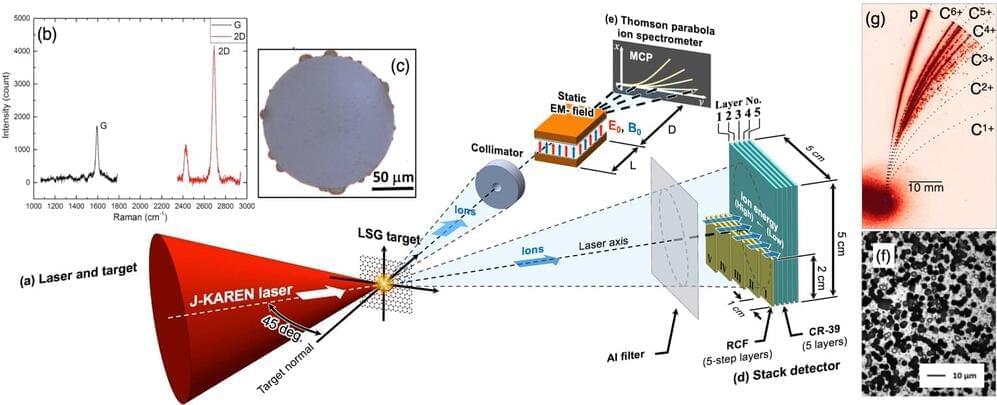But thankfully it did NOT involve 6 malevolent AI robot arms, NOR was it done in the middle of New York City by an oddly literally named Doctor Octavious. ☝️😉
Google’s DeepMind can dynamically adjust the magnetic fields inside a tokamak.


Most energy-producing technologies used today are unsustainable, as they cause significant damage to our planet’s natural environment. In recent years, scientists worldwide have thus been trying to devise alternative energy solutions that take advantage of abundant and natural resources.
In addition to solar energy, wind energy and seawater energy solutions, some physicists and engineers have been exploring the possibility of sourcing energy from nuclear fusion reactions. This is the process through which two atomic nuclei combine to form a heavier nucleus and an energetic neutron.
Two research teams working at the Lawrence Livermore National Laboratory’s (LLNL) National Ignition Facility (NIF) demonstrated new approaches to increase nuclear energy production via a laser-driven fusion reaction. Their findings, published in recent Nature and Nature Physics papers, open new exciting possibilities for one day using self-heating plasmas as sustainable energy sources.


Laser-driven ion acceleration has been studied to develop a compact and efficient plasma-based accelerator, which is applicable to cancer therapy, nuclear fusion, and high energy physics. Osaka University researchers, in collaboration with researchers at National Institutes for Quantum Science and Technology (QST), Kobe University, and National Central University in Taiwan, have reported direct energetic ion acceleration by irradiating the world’s thinnest and strongest graphene target with the ultra-intense J-KAREN laser at Kansai Photon Science Institute, QST in Japan. Their findings are published in Nature’s Scientific Reports.
It is known that a thinner target is required for higher ion energy in laser ion acceleration theory. However, it has been difficult to directly accelerate ions with an extremely thin target regime since the noise components of an intense laser destroy the targets before the main peak of the laser pulse. It is necessary to use plasma mirrors, which remove the noise components, to realize efficient ion acceleration with an intense laser.
Thus, the researchers have developed large-area suspended graphene (LSG) as a target of laser ion acceleration. Graphene is known as the world’s thinnest and strongest 2D material, which is suitable for laser-driven ion sources.



On Monday in Washington, D.C., an agreement was signed between American company NuScale Power and the Polish KGHM mining company to build nuclear reactors in Poland.
“We decided that Poland’s strategic partner in nuclear energy will be the United States and American companies. Both in building a conventional, large nuclear power plant, as well as introducing Small Modular Reactors (SMR),” Deputy Prime Minister and Minister of State Assets Jacek Sasin said during his visit to Washington.
He added that there were hopes that the first reactors will be able to start operating within the next seven to eight years.

The ISS is 1,000 times closer to us than the Moon, and 600,000 times closer than Mars. To get to the latter and back safely, we need faster rocket propulsion systems.
Using the conventional chemical rocket technology we have perfected at this time, a single mission to Mars will require the launch of a mass equal to 10 ISS to be put into space. It will involve at least 30 and as many as 40 of the largest rockets we have today to put the spacecraft, crew and fuel needed for the mission. That doesn’t include adding reserves of fuel placed strategically along the route should a problem arise going to Mars and coming back. Brown states that the total cost of a single mission using this approach would exceed $80 billion using the yet-to-be-launched SLS as the primary vehicle. With SpaceX and the Starship and Heavy booster, the cost could be cut by half. But even $40 billion for a single mission seems excessive.
Using nuclear-powered propulsion systems, however, would eliminate the need to put megatons of fuel into orbit. The only time chemical rockets would be used would be in launching the crew and spaceship components to Earth orbit. That could be done in as few as three launches with the final assembled ship going to Mars and back and then being parked in Earth orbit to be used again on future missions.
What additional advantages can be derived from using nuclear? Thermal-powered nuclear is at least twice as efficient as current chemical rockets and requires a tiny fraction of the fuel to get the job done. Electric-powered nuclear starts moving the rocket slowly away from Earth and then continuously accelerates to attain peak speeds of 200,000 kilometres (120,000 miles) per hour. An electric-powered nuclear propulsion system would use even less fuel than thermal-powered nuclear and would shorten the voyage to a month.

The Joint European Torus (JET) fusion reactor in the UK has generated the highest level of sustained energy ever from atom fusion. On December 21st, 2021, the “tokamak” reactor produced 59 megajoules of energy during a five-second fusion pulse. That’s double what it created back in 1997. (Yes, I know energy is not created or destroyed, but you get what I mean!)
The JET reactor is the flagship experimental device of the European Fusion Program, funded by the EU. It’s mainly designed to prove scientists’ modeling efforts, with an eye on future, bigger experiments with a much larger ITER reactor in France, set to start fusion testing in 2025.
JET hit a Q value of 0.33, meaning it produced about a third of the energy put in. The highest Q value achieved so far is 0.7 by the US Department of Energy’s National Ignition Facility, but it only hit that figure for 4 billionths of a second. The goal with ITER is to reach a Q factor of 10 or greater. Fun fact: ITER isn’t an acronym but means “the path” in Latin. And now you know.